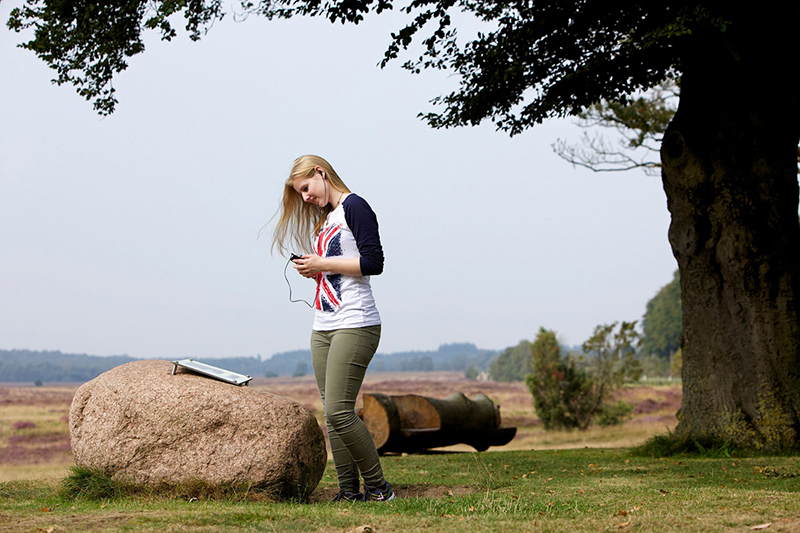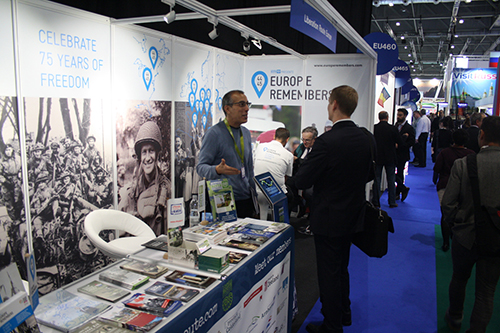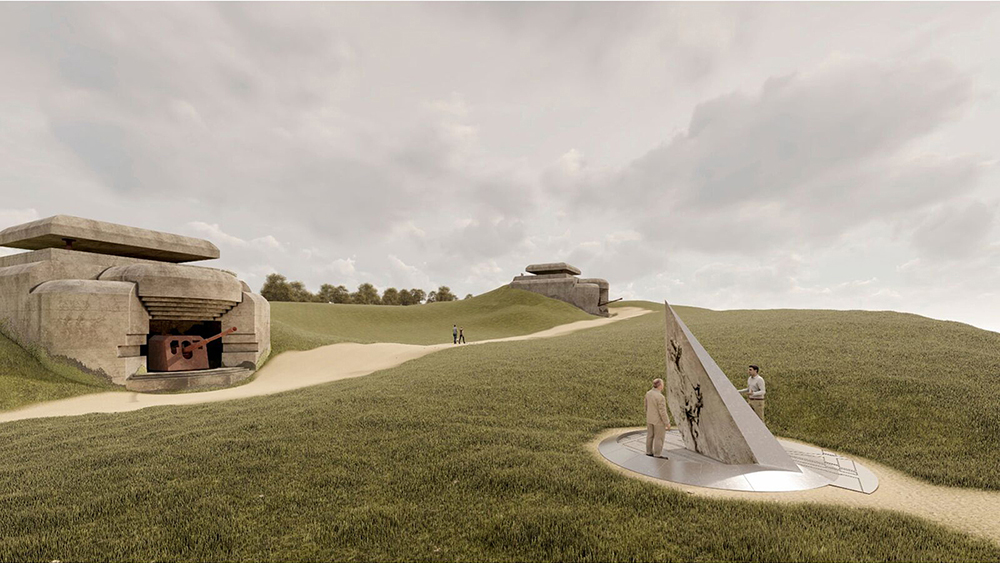Foreword by the Liberation Route Europe
A continuously growing, international remembrance trail, the Liberation Route Europe (LRE) connects important milestones from modern European history. It forms a link between the main regions impacted by the Liberation of Europe in 1943–1945 and is managed by the Liberation Route Europe Foundation.
Origins of the Liberation Route Europe
The LRE’s roots lie in a small regional project that began in the Arnhem–Nijmegen area of the Netherlands, where Operation Market Garden and Operation Veritable took place in 1944–1945. In 2008, three of the area’s museums – the National Liberation Museum 1944-1945 in Groesbeek, the Airborne Museum “Hartenstein” in Oosterbeek and the War Museum in Overloon – joined forces with the Regional Tourist Board Arnhem Nijmegen (RBTKAN) to raise awareness of local World War II history by telling its stories and promoting its remembrance sites.
In Arnhem and Nijmegen, plenty of recognized sites remembered the war and the Liberation – museums, cemeteries and so on – but other important locations were almost completely unknown. Commemorative years witnessed veterans returning to the region with their families, eager to show them where they fought; some were airdropped during the war and keen to identify their landing areas. Unfortunately, many of their stories were unmarked, lost in the fields and forests that blanketed the land. “It was difficult to find all the relevant information, the stories, the bigger picture; we had to do something to keep this history alive,” explains Jurriaan de Mol, one of the project founders.
In response, a network of listening locations called “audiospots” were developed, where visitors could listen to – and read about – the forgotten and hidden stories of World War II. Accessed using a smartphone or by calling a specific phone number, in time these audiospots became local monuments, maintained by local communities. Tour companies and their guides began incorporating the spots on their routes, connecting story and place to give meaningful insight into the Liberation of Europe.
LRE audiospots
The LRE currently has around two hundred audiospots disseminated in six provinces of the Netherlands, as well as in Kreis Kleve in Germany. Audiospots are planned in several other Dutch provinces, and the network is constantly expanding. At each audiospot, poignant stories of wartime experiences are offered in three languages using a mobile application or a local phone number. Throughout this book, audiospots are marked with the headphones symbol  . You can listen to the thought-provoking stories at www.liberationroute.com/audiospots.
. You can listen to the thought-provoking stories at www.liberationroute.com/audiospots.
Credit: Studio Libeskind
The LRE trail today
The initial project met with enthusiasm, and quickly spread to provinces all over the Netherlands. Its immediate popularity prompted the founders to investigate the possibility of expanding into other European nations. When they had successfully joined together with partners from five other countries, the idea of creating a transnational remembrance trail was born, linking the regions, sites and stories of the Liberation across Europe. LRE’s chairwoman, Victoria van Krieken, has compared the route to a pilgrimage – dedicated to the memory of those who fought and lost their lives during World War II.
The LRE, in its international form, was officially inaugurated in Arromanches on the shores of Normandy on 6 June 2014 to mark the 70th anniversary of D-Day. Today, as presented in this book, the trail connects sites – museums, cemeteries, memorials, fortifications, monuments and audiospots – in nine European countries: Italy, the United Kingdom, France, Belgium, Luxembourg, the Netherlands, Germany, the Czech Republic and Poland. But the route is still far from complete. The LRE Foundation is committed to extending the trail, especially into parts of eastern and southern Europe, in order to add yet more perspectives to the story of the Liberation.
A legacy project
The LRE is all about “remembrance and reflection,” says project founder Jurriaan de Mol. “Without the sacrifice of all those men and women in the Second World War, we would live in a totally different world.” The LRE uses a multi-perspective approach, bringing together many different points of view to explore the sensitive history of World War II and the Liberation, presenting our shared European past in all its complexity.
The message of the LRE is to encourage people, and especially the younger generations, to visit local remembrance sites and to experience history firsthand. Victoria van Krieken’s hope is that “young people will consider this history as a reminder that this should never happen again and to be aware that freedom is not to be taken for granted.” The route inspires reflection, awareness, sensitivity and a meditation on the importance of freedom.
Route companions
Touring the Liberation Route Europe is even easier with the book in your hands. This helpful companion brings together two parties in a one-of-a-kind partnership: the expertise of Rough Guides as a long-standing travel publisher and the LRE Foundation, promoting remembrance tourism and international cooperation.
You can read more personal stories on the LRE website (liberationroute.com), as well as finding descriptions of over four hundred sites, suggested places to visit and offers from relevant tour operators. A mobile application also allows you to create your own itineraries (available for download from the Apple Store or Google Play).
It is also possible to travel the route with a professional tour guide specializing in the history of World War II. The LRE Guide Network is a collection of tour operators, from Normandy in France to Berlin in Germany, Arnhem in the Netherlands to Bastogne in Belgium. The guides work to bring visitors the most interesting on-site experiences, as well as placing each in its historical context. Find out more about LRE Guides at www.liberationroute.com/guides.
Credit: Liberation Route Europe
The Europe Remembers campaign raises awareness of the 75th anniversary of the Liberation of Europe
The vfonds
The Dutch National Fund for Peace, Freedom and Veterans Support (vfonds) was created in the 1970s, its mission being to care for war veterans – especially members of the Netherlands Association of Military War Victims. It focuses on the following social areas: promoting the recognition of veterans and other uniformed persons; keeping the memory of war and peace missions alive; remembering and commemorating victims of conflicts; and celebrating freedom. The vfonds supports war and resistance museums and a number of commemorative projects, as well as providing information on military operations and their consequences for civilians and soldiers. Their work is carried out with the wider aim of preserving peace, democracy and the rule of (both national and international) law. For more information, visit www.vfonds.nl.
The Liberation Route Europe Foundation
The Liberation Route Europe Foundation was established in the Netherlands in January 2011, with a special team dedicated to implementing the initiative. The foundation is a membership organization, gathering relevant parties – museums, local government teams, tourism boards and veteran associations – into a multidisciplinary network of stakeholders with the shared mission of preserving the history and heritage of World War II.
The LRE Foundation has been generously supported by the vfonds (Dutch National Fund for Peace, Freedom and Veterans Support) since 2012. Vfonds works across three main areas: historical content development; remembrance tourism tools; and memory transmission activities, with young people as their main audience.
2019–2020: the 75th anniversary of the end of World War II
The years 2019 and 2020 mark the 75th anniversary of the Liberation and the end of World War II; the LRE Foundation has launched two major projects for these jubilee years.
The first initiative, the Europe Remembers awareness campaign, collates a wealth of information about the commemoration – all in one place and available in six languages. The website europeremembers.com provides an inventory of events organized over the course of those two years, including memorial services, special exhibitions, conferences, festivals and concerts. It also presents suggested itineraries and places to visit – with more than six hundred recommended remembrance sites across nine European countries – as well as tours from LRE guides and offers from partnered tour operators. Illuminating historical background and context completes the picture.
The second initiative is a signed hiking trail, due to launch in May 2020 to commemorate VE Day in 1945. The route will allow walkers to follow in the footsteps of many of the soldiers who liberated Europe at the end of World War II. Developed in partnership with several reputable hiking organizations, the main trail will connect London and Berlin, with branches leading off to reach a wider network of remembrance sites. Beyond 2020, the aim is to extend the route and make it bike-accessible.
The trail will be distinctively signed: the LRE Foundation has partnered with Studio Libeskind to develop a family of markers of different sizes and shapes, inscribed with explanatory text and graphics. Creator Daniel Libeskind explains that the collection of markers, or “vectors”, “gives you the sense of direction, but also the sense of unity. It is pointing up to something positive and optimistic. Something that gives you the sense that you are united in this territory with many other people from different walks of life.”
Daniel Libeskind
Daniel Libeskind is a Polish-American architect who founded Studio Libeskind in 1989 with his wife, Nina. His buildings include the Jewish Museum in Berlin, the Imperial War Museum North in Manchester, the Military History Museum in Dresden and the Holocaust Memorials in Ottawa and Amsterdam. He is also the master architect for the reconstruction of the World Trade Center site in New York City.
For Libeskind, whose architecture company has designed the signage for the 2020 LRE hiking trail, the markers or “vectors” represent, “the footsteps of the future, of something that we all badly need across the divisions, across the forgetting, the oblivion of forgetting, which gives rise to all sorts of ghosts of history. To remember is to create a better future.”
Credit: Liberation Route Europe
![]() . You can listen to the thought-provoking stories at www.liberationroute.com/audiospots.
. You can listen to the thought-provoking stories at www.liberationroute.com/audiospots.


